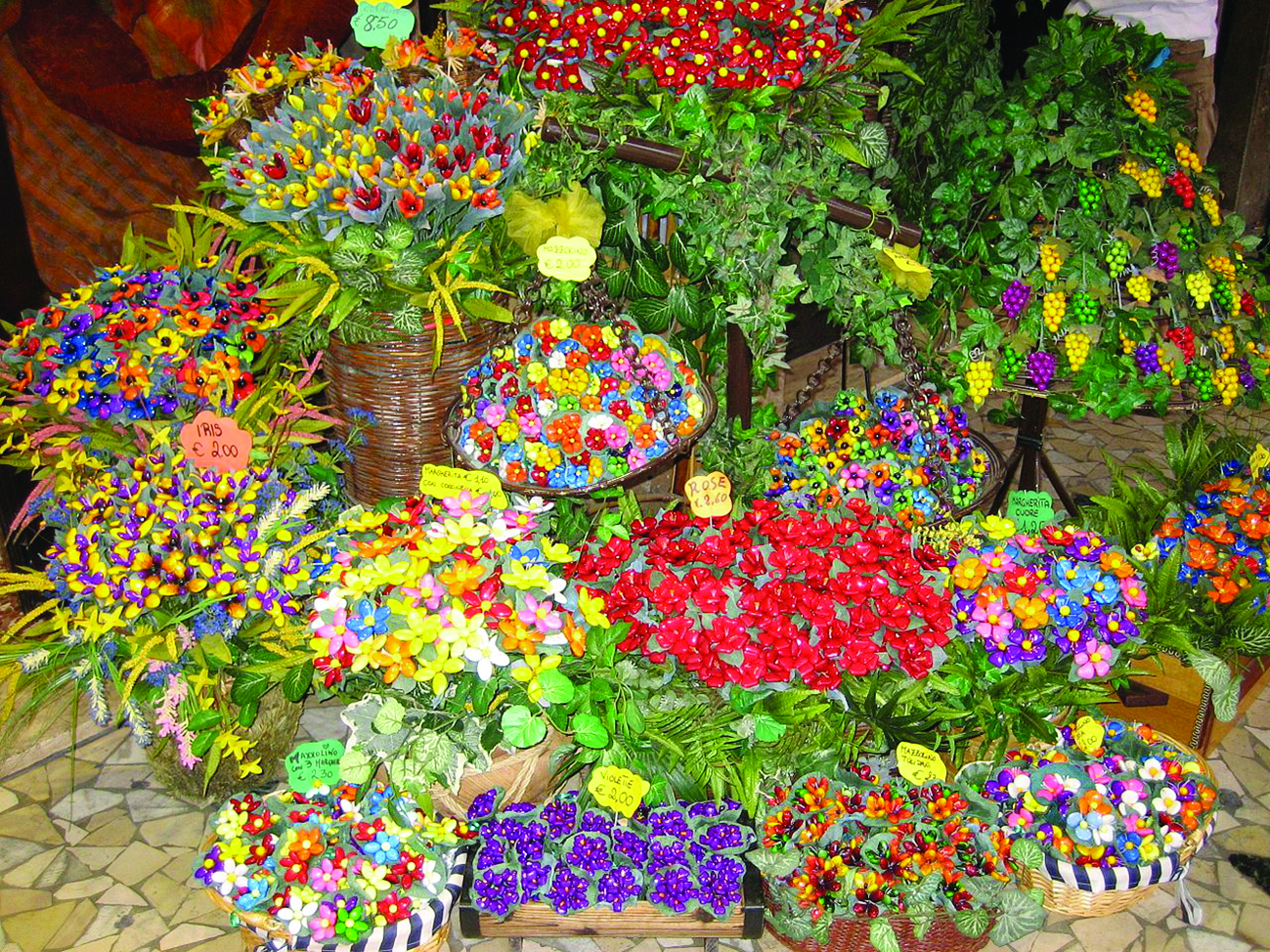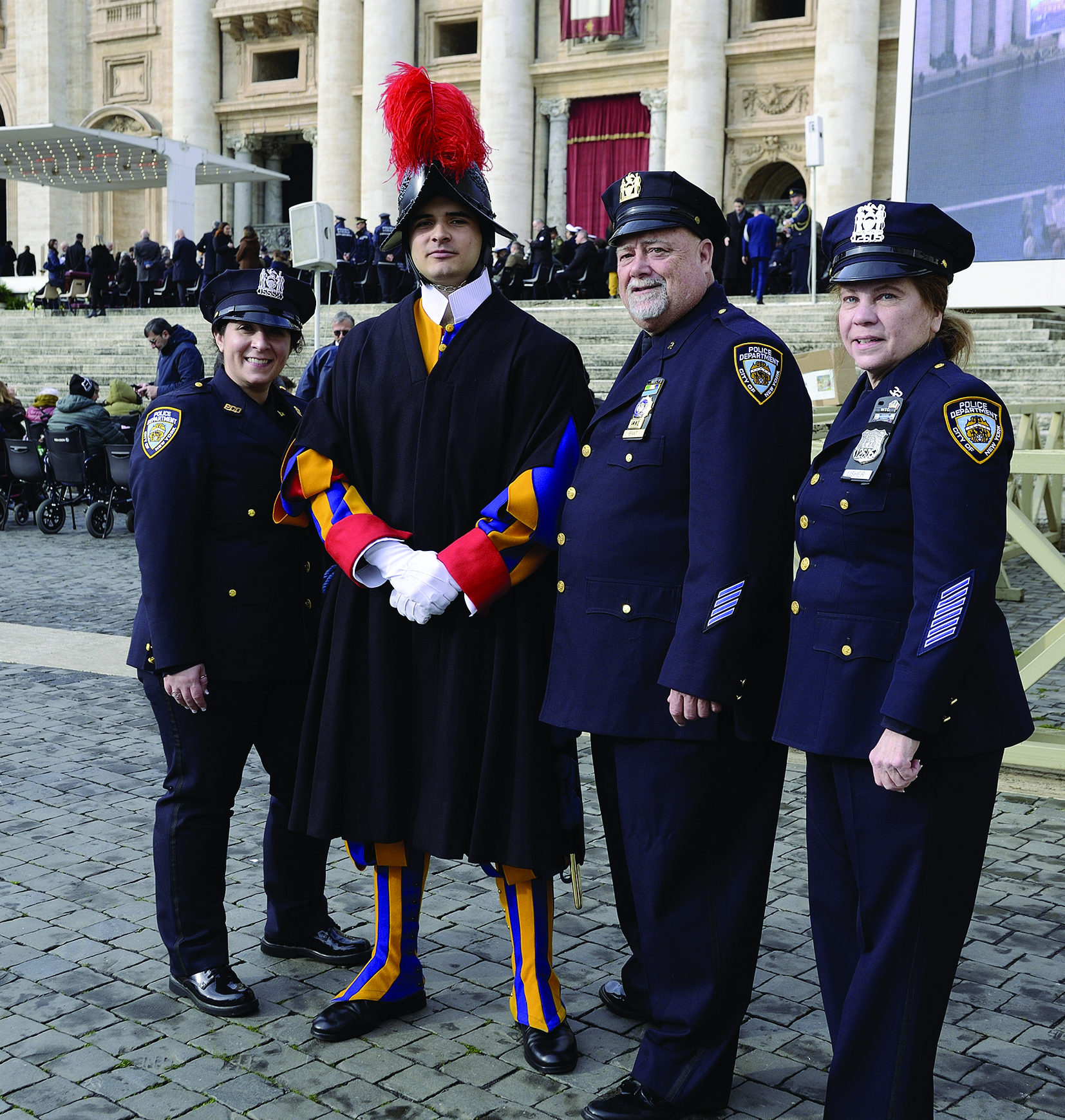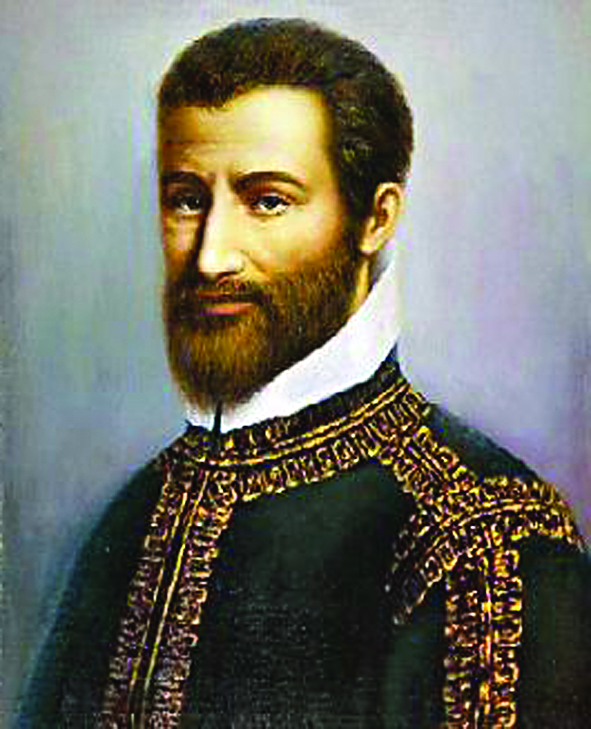On the 80th anniversary of their death, their story is reaching the world
By Anna Artymiak

September 10, 2023 in Markowa, Poland. The President of the Republic of Poland Andrzej Duda was present during the beatification Mass for the “Blessed Martyrs of Markowa.” ceklebrated by Cardinal Semeraro, on behalf of Pope Francis, where he for the first time in the history of the Church beatified an entire family: the Ulma family. (Photos – Grezgorz Galazka)
A story from a village in the Polish Podkarpackie (Subcarpathian) region
As the dark clouds of World War II loomed over Poland, fear of the Germans coming from the west and the Russians from the east paralyzed Poles’ daily lives.
Amidst the wartime conflagration, the lament of orphaned children, and the sobs of wives and mothers whose husbands and sons had been brutally taken from them, a great love blossomed between a village girl and a Jewish boy in Osobnica, in the Podkarpackie region of Poland. To no avail were the parents’ explanations that the war was not conducive to love, that a relationship between a Polish girl and a Jewish boy had no chance of survival. Young Maria’s heart burned with a flame that nothing could extinguish. The name of the Jewish boy was forgotten, but thanks to the courage and great sacrifice of Marysia (Maria) Byczek from a village near Jasło, his story still lives on.
According to the account of Paulina Buglewicz, neé Byczek, Maria’s sister, the girl helped the boy hide from the Germans. Unfortunately, when the German Operation Reinhardt, which was supposed to annihilate all Jews, raged, the unfortunate young man fell into the hands of the executioners. Maria, now expecting his child, had to overcome many difficulties to find out the whereabouts of her beloved. When she determined that he had been transported to a transit camp, or ghetto, in Przemyśl, she set out for it on foot. Despite her already visible pregnancy, she undertook the dangerous journey of more than 120 kilometers (almost 75 miles). When she reached her destination, due to a happy coincidence she found her beloved. Bribing the Germans, she flipped loaves of bread over the fence to the Jewish side for some time, bringing relief to her beloved’s Jewish brethren. Unfortunately, the Germans soon evacuated the Jews to a death camp.
Maria returned on foot to her hometown of Osobnica, where she soon gave birth to a son, Antoni. The young mother, though occasionally exposed to neighborhood mischief, was helped in raising her son by her sister Paulina, who had already been married during the war and was raising several children of her own. The fruit of the love of a young Polish woman and a murdered Jew, Antoni grew up with his cousin-brothers, and after his mother’s untimely death (in the mid-1950s) he was left in the care of this family.
As soon as he grew up, he left for work in Silesia, where he started his own family. In Osobnica, the modest grave of his mother remained in the cemetery, which her son came to visit. “From my childhood I remember uncle Antek, who, when visiting the cemetery, would stop at my family home, which years ago had also been his home,” says Urszula Buglewicz-Kamińska, the great-niece of Maria – a simple girl who fell in love with a Jewish young man, and spared no effort to save him.
This and many, if not most, of the stories of other heroic Polish families who saved, or at least tried to save, their Jewish neighbors or friends will never be published. A great number of these people were themselves killed by the Germans during World War II; later, during the era of communism in Poland, it was forbidden to tell the whole truth about what happened during the war. The fear of persecution prevented many families from transmitting their family stories to the next generation.
Another heroic Polish family
For Urszula, whose great-aunt is the Maria of our opening story, as for many other Polish families last year, the September 10, 2023 beatification in Markowa of the Ulma family, who also lived in the same Podkarpackie region of Poland, is in some way also a recognition of the heroic conduct of their own relatives. Before World War II there lived in Poland the biggest Jewish community in Europe, with Warsaw as the city with the second largest Jewish community in the world, after New York.
This year, on March 24, 2024, is the 80th anniversary of the tragic death of the Ulmas — Józef (44) and Wiktoria (32) Ulma and their seven children: Stasia (8), Basia (6), Władziu (5), Franuś (4), Antoś (3), Marysia (1,5) and the last not yet fully born — as martyrs of charity born of their faith in Christ.
On that tragic night of March 24, 1944, German policemen stationed near the town of Łańcut in Poland circled the Ulmas’ house while it was yet dark. The family were awakened from their sleep and taken out of the building together with their eight Jewish friends: five men from the Szall family from Łańcut, and their neighbors from the Goldman, Grünfeld and Didner families from Markowa, whom they hid for a year and a half.
The Germans first killed the Jews, who were sleeping in the attic but then were awakened, brought out the house and shot; after them, they killed Józef and the visibly pregnant Wiktoria. The children were screaming and crying; after a short conversation the head of the group, Eilert Dieken, made a decision to shoot all the little Ulmas also. The whole village could hear the children’s cries, which after each shot became quieter and quieter, until there was a complete, terrifying silence.
When the executors left, people went to the Ulmas’ home. “I could never forget it. The walls were dripping with blood. I couldn’t help the tears coming to my eyes — and still they come, though now less often,” confessed one of the last witnesses of this tragic night, Stanisława Kuźniar, Wiktoria’s relative and little Władziu’s godmother. A few of the people present asked the Germans to at least bury the Jews and Catholic Poles in two different tombs. Later on they moved the bodies of the whole family to be buried in four large, simple cassocks. The smaller children were buried with their parents, and older ones together in pairs. It was then that they learned that the seventh child had begun to be born when its mother was killed. They could see that the baby’s head and part of an arm had already emerged from the mother’s womb.
The Ulmas, who spent their whole lives in Markowa in the Subcarpathian region — before World War II, the biggest village in Poland — are not only an inspiration to all today, but they can become our intercessors in heaven. In these times especially, when the dark clouds of war loom over Ukraine, the Middle East and many other forgotten parts of the world, they can be to us patron saints for all who seek peace.
Models of faith and family life

Photos taken by the father, Józef Ulma, of his family, before his and their death. They were: Józef (44) and Wiktoria (32) Ulma, and their seven children: Stasia (8), Basia (6), Władziu (5), Franuś (4), Antoś (3), Marysia (1.5) and the last not yet fully born…
Józef and Wiktoria and their children lived a saintly life marked by reading and contemplation of the Gospel. The copy of their Bible is a silent witness of their deep faith. They underlined there the Parable of the Good Samaritan and wrote next to it the word “tak” (“yes” in Polish). It is unknown today if they wrote it when the Szalls first came to their house asking for help, but one thing is certain: they didn’t hesitate to help them. Their decision shows how they both deeply lived their faith, and raised their children in that deep faith as well. (It is impressive that their children never said anything to betray the fact that Jews were staying in their house.)
In the family memory they were a loving couple: among many other saintly married couples, they are another couple becoming a model for couples and parents of today. Though they didn’t have an easy life, they trusted in God in their difficulties, they were humble and they were open to life: they decided to have more children despite the cruel war raging around them.
They can also be taken as a model for modern farming families and those who run their own businesses. Wiktoria worked alongside and supported her husband in all their daily duties, at home and work.
Józef and Wiktoria were not only hardworking; the life of the mind was also important to them. Children were kind and well-educated. The oldest attended school, but when the war began, they turned to educating their children at home; thus, Józef and Wiktoria and their children can be models and patrons for teachers, students and homeschooling families.
Although they were a humble family, there were many books in their home and Józef even subscribed to scientific journals to learn more about technical innovations. He can be considered a saint patron for inventors as he constructed a mill using electricity, and was the first in his village to use electricity to light his home rather than the kerosene lamps that were still in universal use at that time. Even today, the modern electric mills in Markowa still function along the lines of his innovations.
The first “Blessed Photographer”
At the Pontifical University of the Holy Cross in Rome on December 4, the opening of a photo exhibition, including Ulma family photos, by Grzegorz Galazka, entitled “Blessed Martyrs of Markowa,” took place. The presentation of the exhibit was sponsored by the Bernardinum publishing house, as part of an international promotion focusing attention on the Blessed Ulma family. Among those present were the Ambassador of the Republic of Poland to the Holy See, Voivodeship Wladyslaw Ortyl, and special guest Cardinal Marcello Semeraro, prefect of the Dicastery for the Causes of Saints, who, on behalf of Pope Francis, beatified the Ulma family on September 10 in Markowa.
Cardinal Semeraro emphasized the uniqueness of the blessed Ulma family for a number of reasons, including the fact that they were the first entire family to be elevated to the altar together, and the first who suffered martyrdom together for the hospitality they showed. Their story expresses what Pope Francis has recently said, that holiness is realized “in community.” The cardinal noted that their sacrifice is part of what St. John Paul II at the turn of the millennium called the “age of martyrs.”
“The beatification was emotionally very powerful,” he said. “For many reasons it had, and has, this beatification character of uniqueness — uniqueness especially because it is about an entire family. The Ulma family was killed, slaughtered — as I like to say — for guarding the ‘Christian roots.’ And that’s why they gave life [to others]; they were aware of the risks, but they felt the duty to which the Lord God was calling them at that time — to host, to welcome, to guard. This is all theology about the duty of hospitality.”
He then added: “Looking at this beautiful album, I don’t think there are any other blessed people who have had their lives documented, as happened in the case of the Ulma family, thanks to [Józef Ulma’s] interest. We can ask the Holy Father before the canonization to make Józef Ulma the patron saint of photographers.” These words were rewarded with applause. At the same time thanking Archbishop Szal for the relics of the Ulma family he had received, he confided that he keeps the reliquary on the altar at which he celebrates Mass every day.
Then, on December 6, Grzegorz Gałązka told students at the Santa Croce university about the bright spots and the shadows of the work of a photojournalist. The meeting was held as part of the Wednesday series called Conversations around Institutional Communication, and the topic was: “Holiness and photography: the Ulma family, the blessed martyrs of Markowa.”
In his introduction, he noted that a photographer shouldn’t talk much, but instead his photos should speak. “Also with the blessed photographer Józef Ulma: it is possible that he too did not speak much, but his photos that we see today speak volumes. They say a lot about the times he lived in before World War II, but also during World War II, where you can say that war always brings evil wherever it is. This is very sad.” This was the reality of war that the future Blessed lived in.
Józef demonstrated the value of family: “The family is always an important matter, but today, perhaps it is more important than all other things. This is what our new blessed photographer shows us,” noted Gałązka, adding, “we can say, a ‘fellow photographer.’”
Gałązka, also a Pole, confided that he experiences help in his work through the intercession of Blessed Józef Ulma. “Since he has been blessed, for some time now, when I go to take pictures in the Vatican, following the Pope, I turn to him in a short prayer, and I must say that my work has become more joyful, more peaceful… also it seems that my pictures come out better.”
Patrons of Life
Although the day chosen for their liturgical feast is the day of Józef and Wiktoria’s wedding, July 7, the day of their death, on the Feast of the Annunciation, is very symbolic as it is celebrated in the Catholic Church as a day of the sanctity of life. In Poland many faithful undertake the “spiritual adoption” of an unborn child,with a 9-month prayer for a child who is at risk of abortion and whose name only God knows.
In fact, their dedication to life was just celebrated at this year’s March for Life in Washington, D.C., on January 19, 2024: relics of the entire Ulma family were available for veneration in connection with the March, beginning January 12 at the National Shrine of Pope John Paul II, who was of course a fellow Pole. The first-class relics were part of another exhibit entitled “The Good Samaritans of Markowa: The Sacrificial Love of the Ulma Family,” continuing until the s end of March, just after the actual 80th anniversary of the Ulma family’s martyrdom on March 24.
Today the tomb of the Blessed Ulma family is located in their parish church of St. Dorothy in Markowa, at the side altar on the left, on the same side as the image of Our Lady of Markowa.
A simple tombstone is also kept at the nearby parish cemetery.
People from all over come to pray for the intercession of this humble Catholic family whose “yes” written next to the Parable of the Good Samaritan led to their destruction, all overshadowed now by their glory.












Facebook Comments